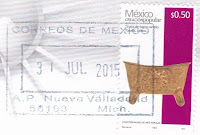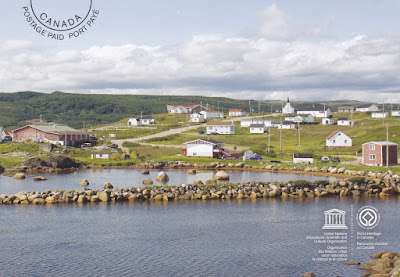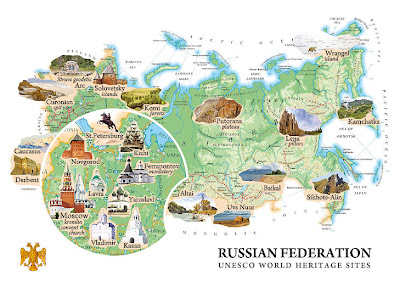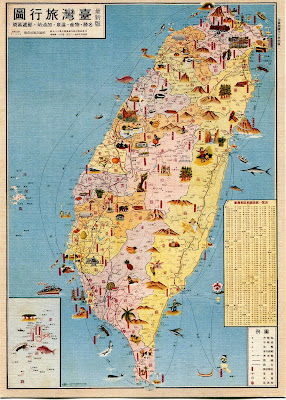Røros Mining Town and the Circumference is linked to the copper mines, established in the 17th century and exploited for 333 years until 1977. The site comprises the Town and its industrial-rural cultural landscapes; Femundshytta, a smelter with its associated area; and the Winter Transport Route. Completely rebuilt after its destruction by Swedish troops in 1679, Røros contains about 2000 wooden one- and two-storey houses and a smelting house. Many of these buildings have preserved their blackened wooden façades, giving the town a medieval appearance. Surrounded by a buffer zone, coincident with the area of privileges (the Circumference) granted to the mining enterprise by the Danish-Norwegian Crown (1646), the property illustrates the establishment and flourishing of a lasting culture based on copper mining in a remote region with a harsh climate.
Tuesday 29 December 2015
Islands and Protected Areas of the Gulf of California, Mexico
The site comprises 244 islands, islets and coastal areas that are located in the Gulf of California in north-eastern Mexico. The Sea of Cortez and its islands have been called a natural laboratory for the investigation of speciation. Moreover, almost all major oceanographic processes occurring in the planet’s oceans are present in the property, giving it extraordinary importance for study. The site is one of striking natural beauty in a dramatic setting formed by rugged islands with high cliffs and sandy beaches, which contrast with the brilliant reflection from the desert and the surrounding turquoise waters. It is home to 695 vascular plant species, more than in any marine and insular property on the World Heritage List. Equally exceptional is the number of fish species: 891, 90 of them endemic. The site, moreover, contains 39% of the world’s total number of species of marine mammals and a third of the world’s marine cetacean species.
Monarch Butterfly Biosphere Reserve, Mexico
The 56,259 ha biosphere lies within rugged forested mountains about 100 km northwest of Mexico City. Every autumn, millions, perhaps a billion, butterflies from wide areas of North America return to the site and cluster on small areas of the forest reserve, colouring its trees orange and literally bending their branches under their collective weight. In the spring, these butterflies begin an 8 month migration that takes them all the way to Eastern Canada and back, during which time four successive generations are born and die. How they find their way back to their overwintering site remains a mystery.
Protective town of San Miguel and the Sanctuary of Jesús Nazareno de Atotonilco, Mexico
The fortified town, first established in the 16th century to protect the Royal Route inland, reached its apogee in the 18th century when many of its outstanding religious and civic buildings were built in the style of the Mexican Baroque. Some of these buildings are masterpieces of the style that evolved in the transition from Baroque to neoclassical. Situated 14 km from the town, the Jesuit sanctuary, also dating from the 18th century, is one of the finest examples of Baroque art and architecture in the New Spain. It consists of a large church, and several smaller chapels, all decorated with oil paintings by Rodriguez Juárez and mural paintings by Miguel Antonio Martínez de Pocasangre. Because of its location, San Miguel de Allende acted as a melting pot where Spaniards, Creoles and Amerindians exchanged cultural influences while the Sanctuary of Jesús Nazareno de Atotonilco constitutes an exceptional example of the exchange between European and Latin American cultures. Its architecture and interior decoration testify to the influence of Saint Ignacio de Loyola’s doctrine.
Nanda Devi and Valley of Flowers National Parks, India
Nestled high in West Himalaya, India’s Valley of Flowers National Park is renowned for its meadows of endemic alpine flowers and outstanding natural beauty. This richly diverse area is also home to rare and endangered animals, including the Asiatic black bear, snow leopard, brown bear and blue sheep. The gentle landscape of the Valley of Flowers National Park complements the rugged mountain wilderness of Nanda Devi National Park. Together they encompass a unique transition zone between the mountain ranges of the Zanskar and Great Himalaya, praised by mountaineers and botanists for over a century and in Hindu mythology for much longer.
Red Bay Basque Whaling Station, Canada
Red Bay, established by Basque mariners in the 16th century at the north-eastern tip of Canada on the shore of the Strait of Belle Isle is an archaeological site that provides the earliest, most complete and best preserved testimony of the European whaling tradition. Gran Baya, as it was called by those who founded the station in 1530s, was used as a base for coastal hunting, butchering, rendering of whale fat by heading to produce oil and storage. It became a major source of whale oil which was shipped to Europe where it was used for lighting. The site, which was used in the summer months, includes remains of rendering ovens, cooperages, wharves, temporary living quarters and a cemetery, together with underwater remains of vessels and whale bone deposits. The station was used for some 70 years, before the local whale population was depleted.
Monday 28 December 2015
City of Quito, Ecuador
Quito, the capital of Ecuador, was founded in the 16th century on the ruins of an Inca city and stands at an altitude of 2,850 m. Despite the 1917 earthquake, the city has the best-preserved, least altered historic centre in Latin America. The monasteries of San Francisco and Santo Domingo, and the Church and Jesuit College of La Compañía, with their rich interiors, are pure examples of the 'Baroque school of Quito', which is a fusion of Spanish, Italian, Moorish, Flemish and indigenous art.
El Salvador
El Salvador is a tiny Central American nation known for its Pacific Ocean beaches, surfing and mountainous landscape. Its Ruta de Las Flores is a winding journey past flowering coffee farms, rainforest zip-line sites and towns like Juayúa, with its weekend food festival, and Ataco, home to vivid murals. The capital, San Salvador, with a dramatic backdrop of volcanoes, has vibrant nightlife and arts scenes.
Friday 27 November 2015
Saltaire, United Kingdom
Saltaire, West Yorkshire, is a complete and well-preserved industrial village of the second half of the 19th century. Its textile mills, public buildings and workers' housing are built in a harmonious style of high architectural standards and the urban plan survives intact, giving a vivid impression of Victorian philanthropic paternalism.
Vaduz, Liechtenstein
Vaduz is the capital of Liechtenstein and the seat of the national parliament. The town, located along the Rhine, has about 5,100 inhabitants.
Valencia, Spain
Valencia is the capital of the autonomous community of Valencia and the third largest city in Spain after Madrid and Barcelona.
On the postcard id the Plaza de la Virgen ( Plaça de la Mare de Deu) a square in Valencia located in center of the city. Around the square are three buildings: the Cathedral of Santa Maria , the Basilica of the Virgin of the Helpless and the Palace of the Generalitat .
Ljubljana, Slovenia
Ljubljana is Slovenia's capital and largest city. It's known for its university population and green spaces, including expansive Tivoli Park. The curving Ljubljanica River, lined in outdoor cafes, divides the city's old town from its commercial hub.
Chișinău, Moldova
Chișinău or Kishinev is the capital and largest city of the Republic of Moldova. It is Moldova's main industrial and commercial center, and is located in the middle of the country, on the river Bîc.
On the postcard is The National Museum of Fine Arts in Chișinău, founded in November 1939.
Jelgava palace, Latvia
Jelgava Palace or Mitava Palace is the largest Baroque-style palace in the Baltic states. It was built in the 18th century based on the design of Bartolomeo Rastrelli as a residence for the Dukes of Courland in their capital – Mitava, Latvia.
Russian dolls - matryoshka
A matryoshka doll, also known as a Russian nesting doll, or Russian doll, refers to a set of wooden dolls of decreasing size placed one inside another.
Lake Sebu, Philippines
Popularly known as the Seven Falls, it features series of seven waterfalls of majestic cascades lined-up one after the other.,
Sweden
Sweden is a Scandinavian nation of thousands of coastal islands, inland lakes, forests and mountains. Its principal cities, eastern capital Stockholm and southwestern Gothenburg and Malmö, are all on the sea. Stockholm is home to royal palaces, parkland and museums such as open-air Skansen. Its 13th-century old town, Gamla Stan, is set on islands joined by bridges and ferries.
Russia
Russia, the world’s largest nation, borders European and Asian countries as well as the Pacific and Arctic oceans. Its landscape ranges from tundra and forests to subtropical beaches. It’s famous for novelists Tolstoy and Dostoevsky, plus the Bolshoi and Mariinsky ballet companies. St. Petersburg, founded by legendary Russian leader Peter the Great, features the baroque Winter Palace, now housing part of the Hermitage Museum’s art collection.
Taiwan
Taiwan is a small island nation 180km east of China with contemporary cities, hot springs resorts and dramatic mountainous terrain. Taipei, the country’s capital in the north, is known for its busy night markets and street-food vendors, Chinese Imperial art at the National Palace Museum and Taipei 101, a 509m-tall, bamboo-shaped skyscraper with an observation deck.
Bahrain
Bahrain, a nation comprising more than 30 islands in the Persian Gulf, has been at the center of major trade routes since antiquity. In its modern capital, Manama, the acclaimed Bahrain National Museum showcases artifacts from the ancient Dilmun civilization that flourished in the region for millennia. The city's thriving Bab el-Bahrain souk offers wares from colorful handwoven fabrics and spices to pearls.
Subscribe to:
Posts (Atom)

















































